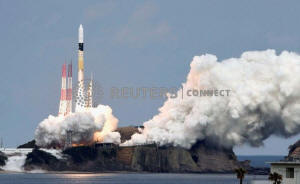|
The
spacecraft's landing on the asteroid Ryugu, just 900 meters
(3,000 feet) in diameter, came after an initial attempt in
October was delayed because it was difficult to pick a landing
spot on the asteroid's rocky surface.
The Japan Aerospace Exploration Agency, or JAXA, said on Friday
Hayabusa 2 fired a small projectile into the surface of Ryugu to
collect particles scientists hope the spacecraft will bring back
to Earth for analysis.
"We may have caused some worry due to the delay but we carried
out our plan flawlessly over the past four months to bring it to
a successful landing," project manager Yuichi Tsuda told a news
conference.
"It landed in the best circumstances among the scenarios we
envisioned," he said.
It is the second Japanese spacecraft to land on an asteroid
after Hayabusa touched down on a near-Earth asteroid named
Itokawa in 2005. It was the first to bring asteroid dust back to
Earth, although not as much as hoped.
Asteroids are believed to have formed at the dawn of the solar
system and scientists say Ryugu may contain organic matter that
may have contributed to life on Earth.
JAXA's plan is for Hayabusa 2 to lift off Ryugu and touch back
down up to three times. It blasted off in December 2014 and is
scheduled to return to Earth at the end of 2020.
(Reporting by Kaori Kaneko and Malcolm Foster; Editing by Paul
Tait)
[© 2019 Thomson Reuters. All rights
reserved.] Copyright 2019 Reuters. All rights reserved. This material may not be published,
broadcast, rewritten or redistributed.
Thompson Reuters is solely responsible for this content.

|
|






